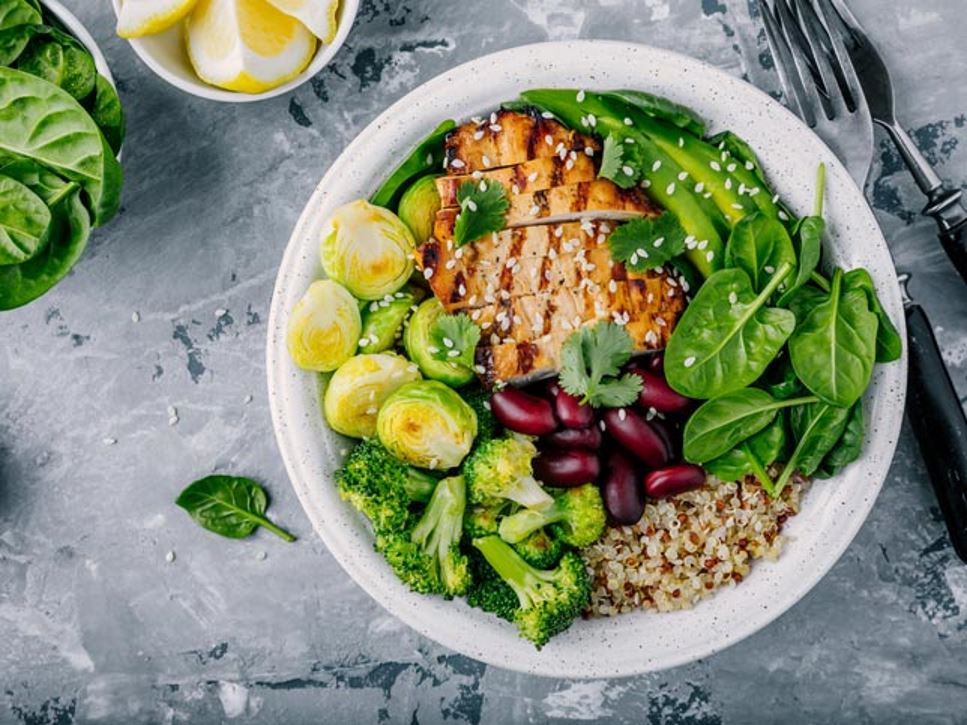A key part of healthful eating means choosing appropriate amounts of different foods. When it comes to deciding how much to eat, the terms serving size and portion size are often used interchangeably. However, they don't mean the same thing.
Serving size is a standardized amount of food. It may be used to quantify recommended amounts, as is the case with the MyPlate food groups, or represent quantities that people typically consume on a Nutrition Facts label.
Portion size is the amount of a food you choose to eat — which may be more or less than a serving.
For example, the Nutrition Facts label may indicate ½ cup cereal for one serving but if you eat ¾ cup, that is your portion size.
Estimating Portion Sizes
Measuring cups and spoons are great tools for making sure your portion is the same as the serving size, however, these tools aren't always available when you're getting ready to eat. Another way to estimate your portion is by comparing it to something else.
- A baseball or an average-sized fist
- Measures about 1 cup
- An appropriate portion size for raw or cooked vegetables, whole fruit or 100% fruit juice
- A tennis ball or small, scooped handful
- Measures about ½ cup
- Equal to 1-ounce equivalent for grains, such as pasta, rice and oatmeal
- A deck of cards or the palm of the hand
- Measures about 3 ounce-equivalents
- An appropriate portion size for fish, chicken, beef and other meats
- The size of the thumb
- Measures about 1 tablespoon
- An appropriate portion size for peanut butter or other nut spreads such as almond butter
- A postage stamp or the tip of the pointer finger to the first joint
- Measures about 1 teaspoon
- An appropriate portion size for oils or other fats
Measure foods regularly to get an idea of what the serving sizes look like. It becomes easier to pick the appropriate amount as you grow more accustomed to it. While serving sizes are a valuable tool, it's important to listen to your body while eating. If you are still hungry after eating one serving, that likely means you need more food. And if you're full on less than one serving, that's OK too.
Overcoming Portion Distortion
It's easy to mistake a larger portion as a better value. To overcome portion distortion and downsize your helpings, try the following:
- Read the label. The Nutrition Facts label can help you to identify the appropriate serving size. Have you noticed any changes to the Nutrition Facts labels? Many manufacturers already have started to adapt the new Nutrition Facts label on their products, and the new Nutrition Facts label will appear on all food items by January 1, 2021. Learn more about the new labels by visiting the FDA website
- Eat from a plate, not a package. It's easy to eat more than one serving when eating straight from the box or bag. Portion out your food first and put the container away before you start munching to keep your portion size in check.
- Use the right tools. Try portioning out foods with measuring cups and spoons to give yourself an idea of what the serving size looks like. Small plates and bowls can also make the portion sizes appear larger and leave you feeling more satisfied.
- Skip the upgrade. When dining out, it can seem like a better value to pay 50 cents extra for a larger size. If you can safely transport the food home to eat later, that might be a good deal. Otherwise just stick to the serving size you know you can eat at one sitting without feeling too full.
Find a Nutrition Expert
Looking for credible nutrition information and recommendations? The Academy of Nutrition and Dietetics' network of credentialed food and nutrition practitioners are ready to help!

